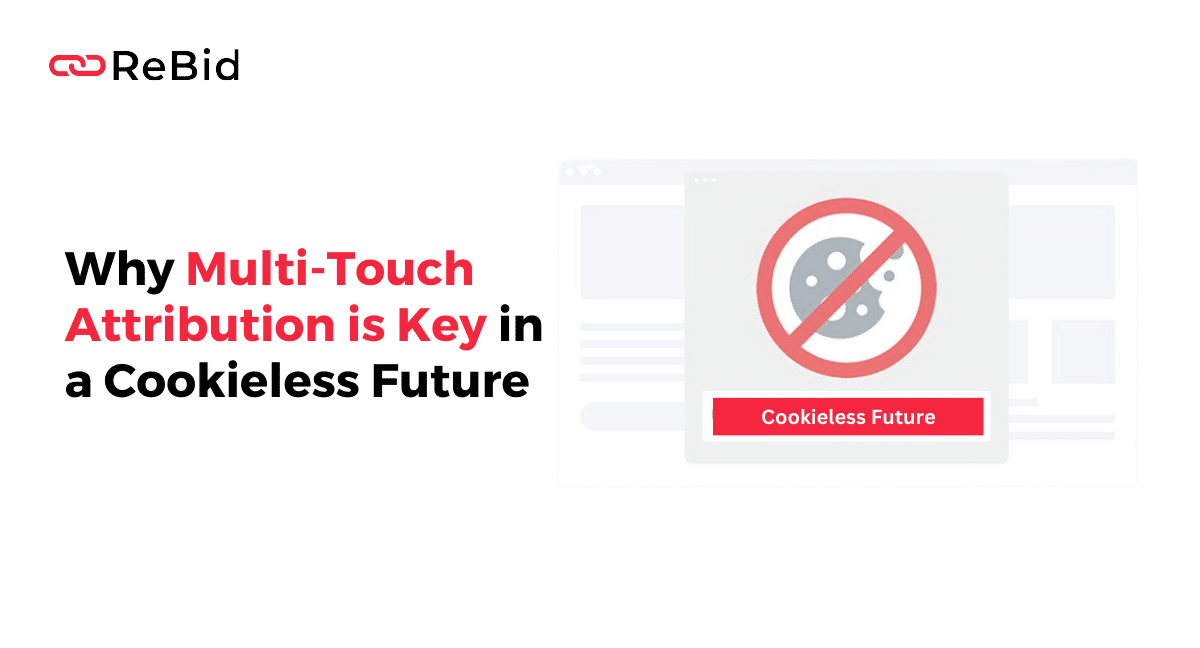The digital marketing landscape is undergoing a seismic shift. Third-party cookies, the backbone of ad tracking for years, are declining due to privacy concerns. This throws a problem into traditional attribution models, leaving marketers scrambling to understand what influences customer conversions.
Here’s where multi-touch attribution (MTA) steps in as a beacon of hope. By considering all the touchpoints a customer interacts with before converting, MTA provides a more holistic view of the customer journey. This blog will delve into why multi-touch attribution is key in a cookieless future, explore its benefits, and discuss how to implement it effectively.
The Demise of Third-Party Cookies and Its Impact on Attribution
Third-party cookies are placed on websites by other domains. They track user behavior across the web, allowing advertisers to target them with personalized ads. However, growing privacy concerns have led to stricter regulations and browser updates that block third-party cookies.
This shift away from cookies leaves traditional attribution models, like last-click attribution, ineffective. Last-click solely credits the final touchpoint (e.g., the ad clicked before a purchase) for the conversion, ignoring all previous interactions that may have influenced the decision.
This creates a skewed picture of the customer journey and hinders effective campaign optimization. Marketers need a more comprehensive approach to attribution in a cookieless world.
Why Multi-Touch Attribution is the Answer
Multi-touch attribution (MTA) acknowledges the complex, multi-step nature of the modern customer journey. It assigns credit to all the touchpoints a customer interacts with – website visits, social media interactions, email clicks, etc. – before converting.
Here’s why MTA is crucial in a cookieless future:
- Optimizing the Marketing Funnel: By pinpointing which channels are most effective at different stages of the funnel, from initial brand awareness to final conversion, marketers can tailor their strategies for maximum impact. Imagine discovering that blog posts nurture leads effectively but your social media ads are falling short. Armed with this knowledge, you can refine your social media strategy to capture attention and drive engagement at the top of the funnel.
- Identifying Unsung Heroes: Traditional models often overlook hidden influencers in the customer journey. Perhaps a seemingly ordinary email newsletter re-engaged a dormant customer, reminding them of your brand just before they made a purchase. MTA reveals these hidden influencers, ensuring credit is given where due. This allows you to recognize and reward valuable content formats or marketing channels that might otherwise be underestimated.
- Strategic Budget Allocation: With a deeper understanding of how each channel contributes to conversions, you can say goodbye to guesswork when allocating your marketing budget. Resources can be strategically directed towards channels that demonstrably drive results, maximizing your return on investment (ROI). Imagine discovering that a seemingly expensive email marketing campaign is actually nurturing leads and significantly boosting conversions. You can then confidently allocate more resources to this channel, knowing its true value.
- Future-Proofing Your Attribution Strategy: As the digital landscape evolves and third-party cookies become a relic of the past, MTA offers a future-proof solution. MTA relies on first-party data, making it a sustainable and reliable method for attribution, even in a cookieless environment. You can be confident that your attribution strategy remains effective and adaptable in the ever-changing world of marketing.
Embracing Multi-Touch Attribution: A Practical Guide
Implementing MTA might seem daunting, but here are some actionable steps to get you started:
- Identify Your Data Sources: Leverage first-party data (website analytics, CRM, etc.) and explore cookieless tracking solutions like contextual targeting.
- Choose an MTA Model: Different models (first-touch, last-touch, time-decay, etc.) assign credit differently. Consider your marketing goals and choose a model that aligns with them.
- Invest in a Customer Data Platform (CDP): A CDP can unify your customer data from various sources, providing a holistic view for better MTA implementation.
- Focus on Customer Relationships: Building strong customer relationships fosters trust and encourages them to opt-in to data collection, enriching your first-party data pool.
Conclusion
The death of third-party cookies doesn’t have to spell doom for marketing attribution. Multi-touch attribution offers a powerful alternative, giving you the insights needed to optimize your campaigns and understand your customers better. By embracing MTA and prioritizing first-party data, you can navigate the cookieless future with confidence.
FAQs
1. Isn’t multi-touch attribution complex to implement?
While it requires some initial setup, MTA solutions are becoming increasingly user-friendly. Partnering with a marketing analytics provider can smoothen the implementation process.
2. How can I ensure data accuracy for MTA?
Maintaining data hygiene is crucial. Regularly cleanse your data sources to eliminate duplicates and inconsistencies that can skew your attribution results.
3. What are the limitations of multi-touch attribution?
MTA might not be able to attribute credit to offline touchpoints like traditional advertising. However, it provides a much clearer picture compared to last-click models.





